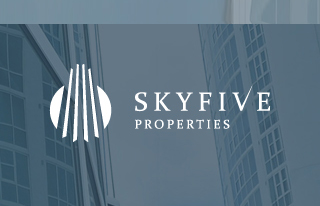Categories
Choose Language





Popular Posts
[mashshare url="https://www.skyfiveproperties.com/blog/power-staging-shown-sell-real-estate"]The Power of Staging: How it’s Been Shown to Sell Real Estate
The power of staging stands out as a decisive game-changer. Gone are the days when simply sprucing up bathroom decor ideas or a fresh coat of paint sufficed.
As leading real estate agents will attest, strategies like staging have been shown to sell homes more swiftly and often at a higher price.
Let us explore the realm where aesthetics and real estate expertise intersect.
Historical Context of Staging
Tracing back the roots of home staging, one finds its humble origins in the simple furniture rearrangement to showcase a home’s potential.
Over the decades, as real estate markets evolved and competition intensified, the approach to selling homes underwent a transformation. Sellers and real estate agents recognized the critical importance of a home’s visual appeal.
This revelation marked the birth of professional home staging, where homes were no longer just structures but stories waiting to be told.
The Psychology Behind Staging
Staging, in essence, is about establishing a profound emotional connection with potential buyers. Imagine walking into a home and feeling an immediate bond, an innate sense that this is “the one.”
Professional home stagers have mastered this craft. Stagers create an environment where buyers can visualize their future by decluttering spaces, strategically placing furniture, and maintaining a neutral palette.
The primary bedroom might hint at tranquility and rest, while the living room exudes warmth and camaraderie. Personal items, though adding a touch of reality, can deter buyers from imagining their own life in the space.
The fine line between making a home appealing yet neutral is where stagers work their magic.
Quantifying the Impact: Real Data
A question often asked is, “Does staging genuinely affect the sale price?” Research and case studies affirmatively answer this.
Homes that have undergone professional staging often not only fetch a higher sales price but also spend considerably less time on the market.
The cost of staging, which includes staging fees and occasionally furniture rental, might initially seem like an added expenditure.
Yet, when sellers witness a substantial hike in their final selling price and quicker sales, the return on investment becomes clear.
Staging Strategies That Work
Success in staging lies in a harmonious blend of various elements:
- Neutral Palette & Decluttering: Adopting neutral tones ensures that the home resonates with a diverse range of buyers. A decluttered space allows buyers to focus on the home’s features without distractions.
- Highlight Key Features: Every home has its unique selling points, whether it’s a vintage fireplace, a panoramic view from the balcony, or an expansive backyard. Effective staging magnifies these aspects, ensuring they catch the buyer’s eye.
- Primary Bedroom Appeal: This room is often a dealmaker. A well-staged primary bedroom that hints at relaxation, luxury, and privacy can strongly influence a buyer’s decision.
Virtual Staging vs. Traditional Staging
Understanding the Two
- Virtual Staging: At the intersection of technology and real estate, we find virtual staging. Using sophisticated software, digital artists furnish and decorate empty spaces, crafting realistic images of what the property could look like when furnished.
- Traditional Staging: This involves physical furniture, decor, and sometimes even aromatic scents to enhance the atmosphere. Professional stagers, often in collaboration with interior designers, transform vacant homes into aesthetically appealing lived-in spaces.
Pros and Cons
Virtual Staging:
- Advantages:
- Cost-effective: Typically, virtual staging costs a fraction of traditional staging since there’s no physical inventory involved.
- Flexibility: Different styles or arrangements can be showcased without manual labor. Want to see how a room looks with a contemporary vs. traditional look? It’s a few clicks away.
- Quick turn-around: Properties can be staged and listed in a shorter time frame.
- Disadvantages:
- Lacks tangibility: Potential buyers might feel deceived upon visiting an empty home after viewing its virtually staged images.
- Dependent on quality: The impact largely depends on the quality of the digital staging. Poorly done work can appear artificial.
Traditional Staging:
- Advantages:
- Tangible experience: Potential buyers can touch, feel, and experience the space, which can lead to a stronger emotional connection.
- Holistic ambiance: From the softness of a couch to the fragrance of fresh flowers, all senses are engaged.
- Genuine impressions: What buyers see in listings is what they experience during visits.
- Disadvantages:
- Higher costs: Involves furniture rental, staging fees, and sometimes maintenance for the duration of the listing.
- Time-consuming: Physically setting up and removing furnishings can be labor intensive and time consuming.
Common Misconceptions About Staging
- “Staging is only for high-end properties.”
- Contrary to popular belief, properties across all price points can benefit from staging. Whether a compact apartment or a sprawling mansion, each property has a unique story, and staging helps in narrating that tale compellingly.
- In fact, midrange homes can often see a more pronounced percentage increase in their sale price with effective staging.
- “Staging is too expensive.”
- While there are costs associated with professional staging, they should be viewed as an investment rather than an expense.
- Investing in this can result in a higher selling price and a faster sale. Plus, with the advent of virtual staging, more cost-effective solutions are available to sellers.
- “Staging is just about furniture and decor.”
- Staging goes beyond just placing furniture. It’s about highlighting the home’s strengths, downplaying its weaknesses, and making it appeal to the broadest audience. It encompasses aspects like lighting, flow, and even the home’s exterior.
- “It’s better to show a vacant home so buyers can imagine their own items.”
- While a blank canvas might seem like a good idea, many buyers struggle to visualize the potential.
- Staging provides them with a reference point and can help them see the possibilities, making the space feel homely rather than hollow.
With the rapidly evolving landscape of real estate, sellers and agents alike are continuously seeking strategies to ensure properties are presented in their best light.
Both virtual and traditional staging have their place, and understanding their intricacies can lead to more informed decisions. Similarly, demystifying common misconceptions about staging can empower sellers to utilize this potent tool more effectively.
Tips for Sellers on a Budget
A tight budget doesn’t mean compromising on effective staging:
- DIY Hacks: Minor tweaks, like rearranging furniture, introducing indoor plants, or depersonalizing spaces, can bring about noticeable changes.
- Consultations: Opt for consultations from professional home stagers. Their insights, even without full-fledged services, can provide invaluable guidance on enhancing your home’s appeal.
Conclusion
Staging is a strategic symphony of design and psychology designed to captivate. In a world where buyers are inundated with choices, setting a property apart is imperative.
So, for sellers contemplating the path ahead, remember: the power of staging is not just influential—it’s transformative.
[mashshare]
Popular Posts:

Kaya Wittenburg
Kaya Wittenburg is the Founder and CEO of Sky Five Properties. Since the age of 10, real estate has been deeply ingrained into his thoughts. With world-class negotiation and deal-making skills, he brings a highly impactful presence into every transaction that he touches.
He is here to help you use real estate as a vehicle to develop your own personal empire and feel deeply satisfied along the way. If you have an interest in buying, selling or renting property in South Florida, contact Kaya today.










